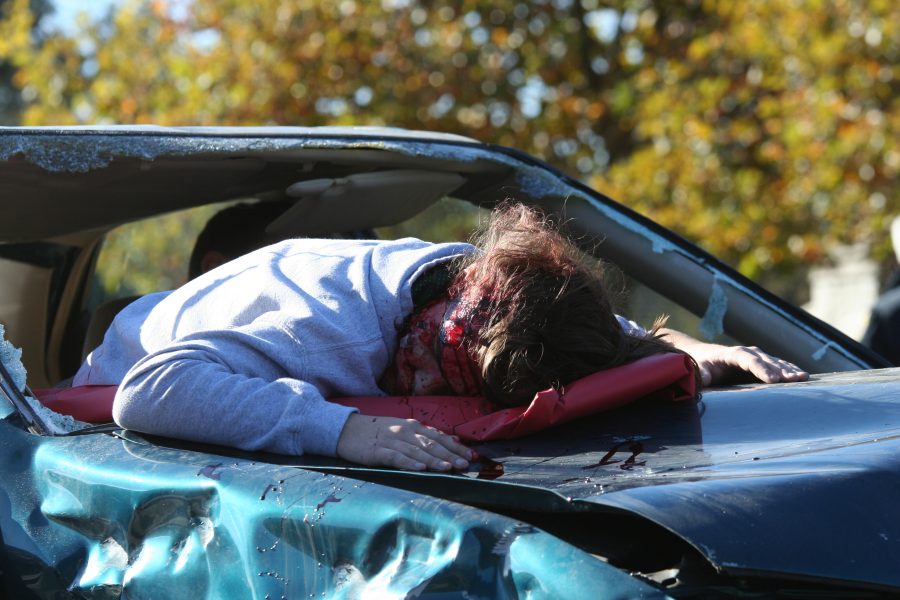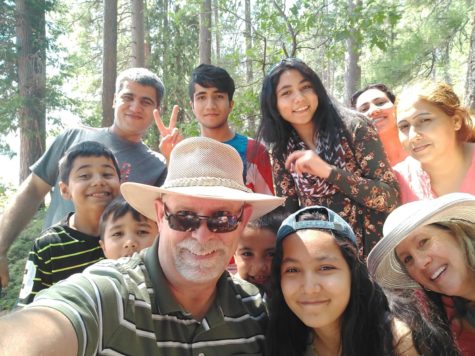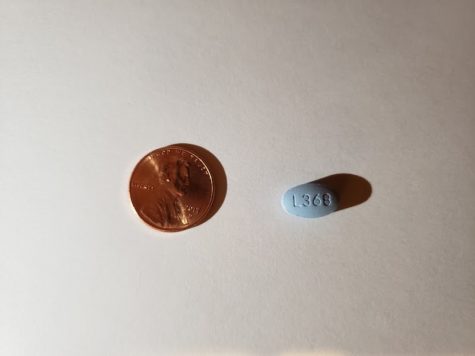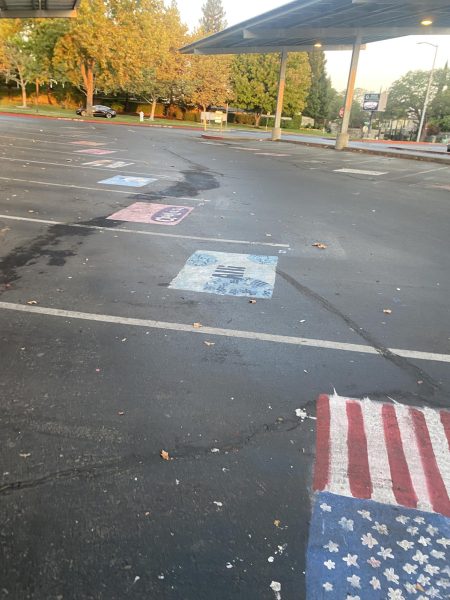Every 15 Minutes: An examination of the program’s true impact
Junior Ryan Hunter appears dead in drunk driving simulation.
Every 15 Minutes has come and gone, but has its effect really lasted?
On Nov. 16-17, Granite Bay High School students participated in the Every 15 Minutes Program, which combats drunk driving.
The aim of the program is to inform high school students of the dangers of drunk driving by simulating a car accident involving real GBHS students.
Following the accident, a funeral occurs to remember those who ‘died’ in the crash.
Prior to the simulation, every 15 minutes, as the name of the program suggests, a student is pulled out of a classroom on campus and joins the ‘Living Dead.’
The Living Dead represents the number of individuals in the real world whose lives are taken every 15 minutes by a drunk driver. Students are exposed to what would actually happen were they to be involved in a drunk driving incident.
The program can be extremely emotional for some, considering the students who are in the simulation are good friends or even siblings of the students who are watching.
It takes an emotional toll on many of the spectators as they experience the possibility of losing a person close to them in a drunk-driving accident.
“It was an absolutely insane experience having my brother in the car crash,” said sophomore Summer Holt, whose brother, Brennan Holt was a victim in the staged crash. “I definitely did not expect it to feel as real as it did, so I simply was not prepared for the emotions … When the doctors pulled us into the room to tell us what had happened to Brennan, they all had a devastated look on their faces that made everything that was going on feel extremely real.”
GBHS juniors and seniors took to Twitter to help advocate the importance of the program and to remind their friends refrain from drinking and driving or letting another person drive drunk.
“#E15M was unforgettable,” junior Ryan Hunter tweeted from his twitter account (@ry_hunter) on Nov. 17. “As a community let’s do our best to never forget the lessons it taught us … let’s make good choices.”
Though emotions run high during the week of Every 15 Minutes, many wonder whether the effects of the program stay with these students when they encounter alcohol in the future.
GBHS’s annual Winter Ball has just passed and underage drinking has been a common occurrence following the dance.
Before Every 15 Minutes, many wondered whether the message of the program would last with the students who chose to consume alcohol with their friends after the dance.
Junior Tara Zamiri believed it would.
“We see the consequences in the simulation, so it’s very eye-opening to those who don’t know everything they are putting on the line,” Zamiri said.
Senior Gemma Rizzuto, on the other hand, believes the people who are directly involved in the program are the ones who are most affected by the message, as opposed to those who are simply spectators.
“I think those actually involved in the program are much more affected by it,” Rizzuto said. “It definitely resonates in them much more than others, simply because they got an entirely different experience.”
Some students have a hard time taking the program seriously, especially because they know it is a simulation.
“Of course there are going to be people who don’t react because they know it’s only a simulation, but I don’t think it’s ok for them to make fun of others or make a person seem dramatic if they are reacting how they are,” Zamiri said.
The lack of involvement can make it hard to relate to the situation.
“I think everyone should take it seriously as it is a serious issue, but it’s hard to if you’re not actually involved,” Rizzuto said.
To enhance the experience of Every 15 Minutes, it has been proposed that it also be extended to sophomores as well, since that is the year many of them begin to drive.
There are both pros and cons to having E15M start at the sophomore level, which Summer Holt explained.
“I think it would be interesting if E15M started before people start driving, because you can hop in a car with anyone, and they may be intoxicated. I think it would reach the whole school a little bit better,” Holt said. “However I feel that if they put the right people in the crash or the Living Dead … then it reaches them anyway. For example, all of my peers were impacted because a lot of them knew Brennan.”
She also reiterated that it would be much more difficult for students to relate to the simulation if it is spread across a majority of the school since it is more likely they will know fewer of the people who are involved.
“It’s more impactful with just juniors and seniors because they know each other better than seniors would know sophomores or freshmen,” she said.
Maturity is also another factor when it comes to deciding which age group to target with this program.
“Even less people would take it seriously as underclassmen simply because they are more immature and haven’t had to deal with any of those factors in their lives yet,” Rizzuto said.
While preventing high school students from underage drinking might be next to impossible, many hope students are responsible if they do choose to drink.
“Underage drinking happens, and I don’t think there’s any way to stop it,” Rizzuto said. “People just need to be made aware of the effects and how dangerous (their) decisions can be, so that when they do, they can be as safe as possible.”













